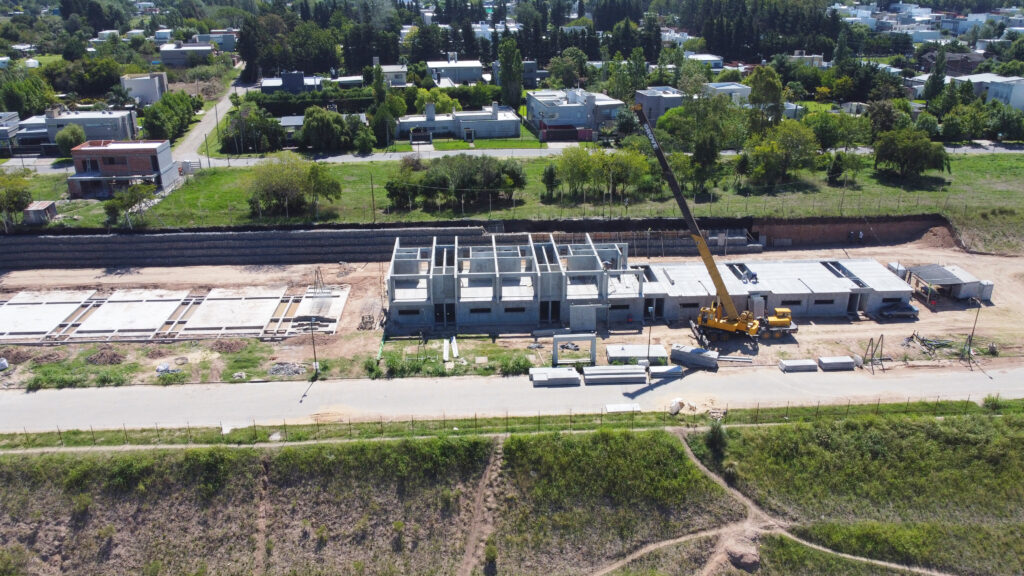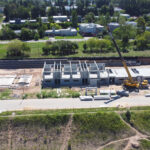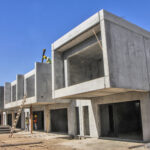Cantera Urbana, Argentina
How do you turn a hole in the ground into a sustainable, livable, and affordable urban oasis? And how do you do it in a country like Argentina, where skilled labor is scarce, and a high inflation rate quickly eats the value of any investment?
That was the question that the Argentinian construction company OCSA grappled with after taking on the project “Cantera Urbana”.
| Location | Former quarry in La Plata, Argentina |
|---|---|
| Size | 100,000m2 of construction distributed over 5 hectares |
| More than 300 low to medium density multifamily homes | |
| 23,000m2 of commercial buildings | |
| Construction period | 2021-2027 |
| Partners | OCSA, Astori, TECbim (precast specialist engineers), Ecobuilding (geotermic aerotermic and solar system provider) |
| Types of structures | load bearing walls with non-load bearing walls |
| Precaster | Astori |
A sustainable model urban center
“Cantera Urbana”, meaning Urban Quarry, is an ambitious development project that will turn an over 5-hectare large former quarry in La Plata, the capital of the Buenos Aires province, into a lush and sustainable residential, commercial, and recreational area.
“It was a 20-meter-deep hole in the middle of the city. It was awful,” describes Natalia Larocca, Director of Entrepreneurship and Projects at OCSA. “Now, we want to transform it into something beautiful.”
The vision is to turn a disused part of the city into an environmentally friendly model urban center with a balanced distribution of buildings and public park areas. The planning takes maximum advantage of the area’s climate with large water reservoirs and vegetation in the sunniest areas.
A financially viable construction of more than 300 family homes, five public parks and 23,000 square meters of commercial buildings is, however, not straightforward in Argentina. The country suffers from sky-high inflation and interest rates and a lack of skilled construction workers.
Bumpy road ahead
It will take seven years at least – depending on the state of Argentina’s economy – to finish “Cantera Urbana.” According to Larocca, Elematic’s equipment allows OCSA to build the new urban area within five years, but it will take a few more years to sell the buildings.
The speed of construction also depends on whether the required spare parts and materials can be imported to Argentina. There is a cap on the amount that you can import for to the country, which has already led to a lot of headaches at OCSA. At the time of writing, for example, Larocca is struggling to import connectors from Finland.
Larocca is, nevertheless, optimistic about the future and happy and proud of what OCSA, Astori, and Elematic have achieved so far.
“In Finland, it takes 1.5 hours to cast one meter of concrete. The same work takes us five hours, but I am sure that with time, we will learn and improve,” she says.


